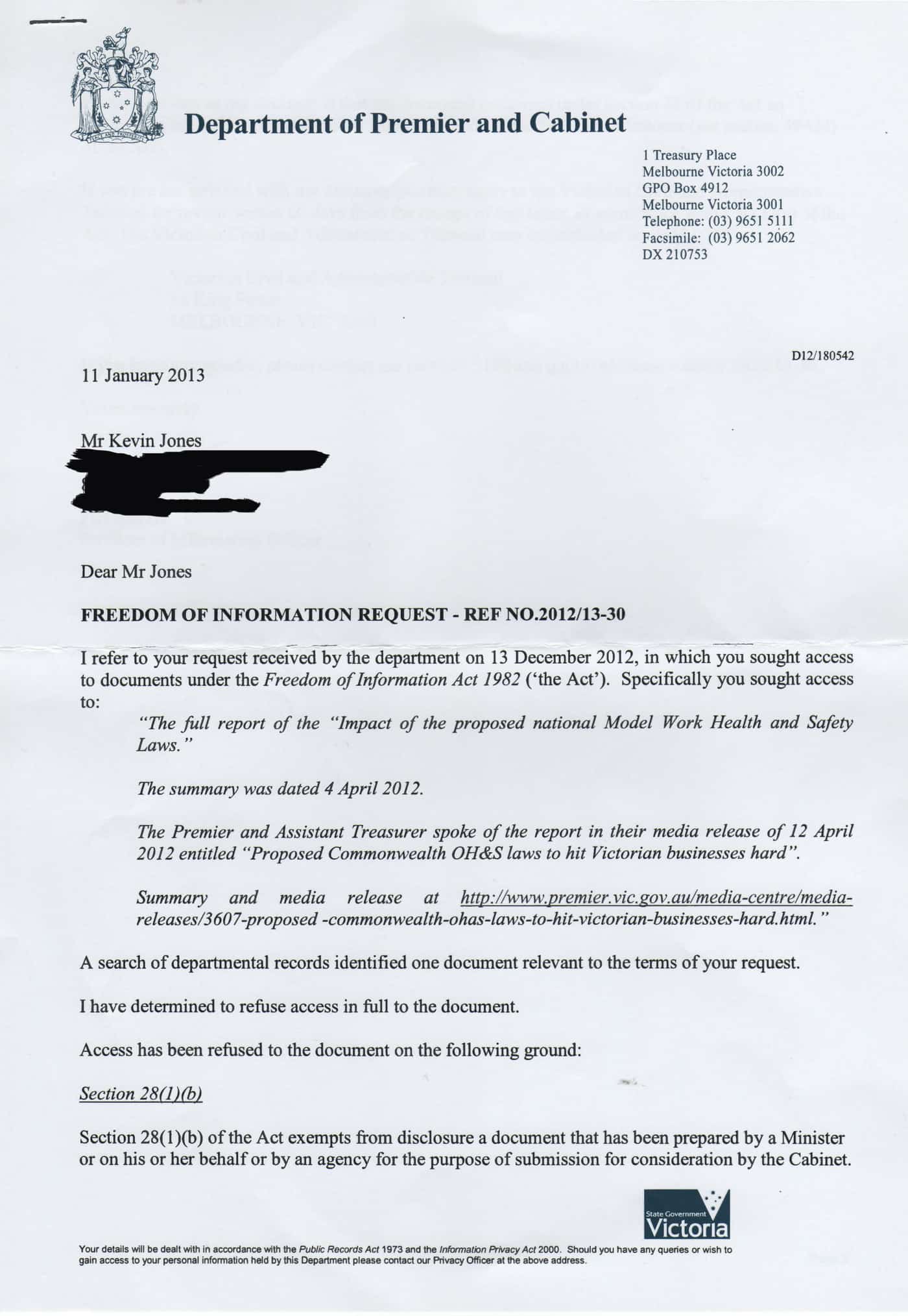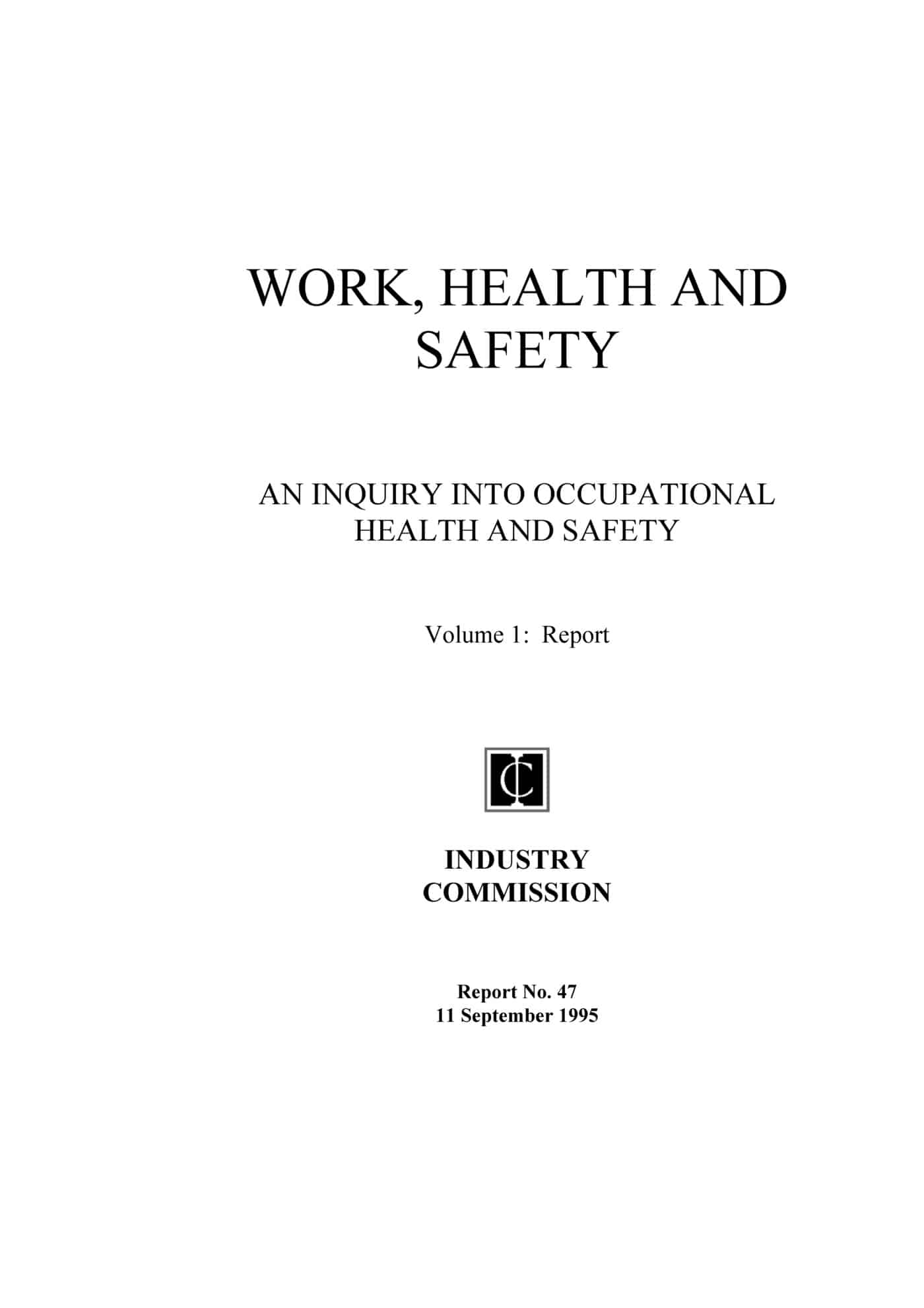 The Victorian Government has repeatedly claimed that new Work Health and Safety laws would cost billions of dollars to introduce. It has justified this political decision with a summary of a report produced by PricewaterhouseCoopers (PwC) in April 2012. SafetyAtWorkBlog applied for the full report under Freedom of Information (FOI) and was rejected.
The Victorian Government has repeatedly claimed that new Work Health and Safety laws would cost billions of dollars to introduce. It has justified this political decision with a summary of a report produced by PricewaterhouseCoopers (PwC) in April 2012. SafetyAtWorkBlog applied for the full report under Freedom of Information (FOI) and was rejected.
The Department of Premier and Cabinet’s FOI Officer indicated that the full report existed but that it was not being released as the FOI Act
“…exempts from disclosure a document that has been prepared by a Minister or on his or her behalf or by an agency for the purpose of submission for consideration by the Cabinet.”
The rejection is difficult to understand as the government had already released a 34 page summary.
SafetyAtWorkBlog has been very critical of the summary report due to the amount of disclaimers, equivocations and selected data sources in the PwC report. The estimated costs have appeared in discussions about the Work Health and Safety laws in other States so the full analysis of the laws by PwC would be enlightening. It was hoped that the full report would provide additional background and context to discussing the “costs of safety” but that is not to be.


 A lot of recent discussion of the impacts of workplace safety and productivity has centred on the Productivity Commission’s “
A lot of recent discussion of the impacts of workplace safety and productivity has centred on the Productivity Commission’s “ In 2012 many countries have been required to pursue economic austerity measures. A national or international economy rarely has any direct effect on safety management but the current economic status has led to an increase in harsh, or strong, political decisions and some of these decisions will affect safety management and professionals. One obvious manifestation of political safety decisions is the UK Government’s decision to allow small businesses to step outside its occupational health and safety (OHS) laws in its pursuit of reducing supposed “
In 2012 many countries have been required to pursue economic austerity measures. A national or international economy rarely has any direct effect on safety management but the current economic status has led to an increase in harsh, or strong, political decisions and some of these decisions will affect safety management and professionals. One obvious manifestation of political safety decisions is the UK Government’s decision to allow small businesses to step outside its occupational health and safety (OHS) laws in its pursuit of reducing supposed “